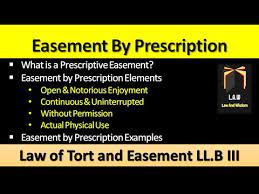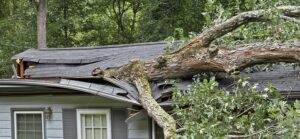An Easement by prescription is a type of possession with disadvantages, unlike Easement by necessity. The name you choose for your search is one of the final stumbling blocks you’ll face while buying a house. Although it may appear to be a minor formality, flaws identified by a title search might derail the sale.
Luckily, in most circumstances, such issues appear to be more severe than they are and are no exception.
What are easements, easement by prescription, and what does it imply for you as a new homeowner? Let’s examine these issues.
What Is an Easement?
An easement is a real estate concept that describes a situation in which one party utilizes the property of another in exchange for a fee.
Public utility corporations frequently pay to acquire easements to build telephone poles or run pipes over or beneath private land. They can harm property values because of ugly electricity lines.
How Does It Work?
A typical agreement defines a payment method by the petitioner to the owner for the right to use the easement subject for a specific purpose.
It is specific to the agreement between the two parties concerned and the use of the land is specified. The property owner has the option to terminate it.
Such agreements are occasionally transferred in a property transaction. So potential purchasers should be aware of any easements on the property under consideration.
Examples
There are three types of agreements.
Easement for a utility
It is a contract between a property owner and a utility company that permits the utility company to operate electricity lines or other facilities.
Private easement contract
This is typical allowing one party to utilize a piece of property for personal purposes.
A farmer, for example, may want access to a pond or extra agricultural land, and a private arrangement between his neighbor and himself provides him with this access.
Furthermore, if a person’s health system requires a pipe or a similar service to be run through an adjacent property, the arrangement is managed through a private easement.
By Necessity
This is more permissive because it does not require a written agreement and is enforceable under local laws.
An easement by necessity occurs when one party is compelled to use the property of another.
What is an easement by prescription?
An easement by prescription is established when someone uses another person’s property without the owner’s consent for a set amount of time.
Additionally called a “prescriptive easement” or a “presumed easement,” this has legal status.
When a person—without an ownership interest in the property and the owner’s consent—constantly and openly uses a portion of another person’s property for a particular purpose, usually as a shortcut or to access an attraction like a lake or a school, an easement by prescription is created.
There are various sorts. Easements allow public services and utility providers to access your land as needed.
You can offer an easement to another person. Assume you own a lakeside house, and your neighbors across the street require lake access. You may offer them the right to use your land specifically for lake or dock access. When you sell the property, a title search will reveal the easement.
An Example of an Easement by Prescription in Action
It becomes evident when you examine the classic example of a shortcut across property children use to get to school. No one approached the long-time property owner for permission; it just appeared to happen for as long as anybody could recall.
Assume a new owner installs a barrier to prevent access to the shortcut.
The students might argue that they have a prescriptive easement on the property that forbids the new owner from installing a fence or other impediments to the shortcut.
Let’s look at how the law might view this circumstance:
Notorious And Open Use
If the owner was well aware that youngsters were utilizing their land, and it appeared that the whole school community was aware that they should utilize this shortcut year after year, then the utilization of the property was infamous.
Continuous Use
Although students did not utilize the walkway over the summer, they returned each year when school started. As a result, use was continuous, even throughout the summer vacation.
Harmful or hostile use
Historically, any non-permissive use of property by a trespasser is considered unfavorable or hostile.
In truth, all a homeowner needs to do to prevent the development of the easement is offer their explicit agreement for using the land before the passage of time.
What Is the Difference Between Adverse Possession and Prescriptive Easement?
You could think this sounds similar to adverse possession, and you’d be right. There are, in fact, equivalent needs. However, adverse possession gives fee title to the occupied real property, whereas prescription just creates an easement in favor of use.
As a result, an adverse possessor obtains all of the privileges of a fee title owner. On the other hand, a prescriptive easement grants the easement holder a restricted right to utilize the property for another.
Is easement by prescription excellent or bad?
It is up to the homeowner to choose whether they are excellent or terrible. If the presence of an easement makes the property unappealing, it is bad.
How To Avoid Easement by Prescription
It is simpler to avoid a prescriptive easement than to remove an existing one. A property owner or a potential house buyer might prevent them in two ways.
The simplest solution is to prevent the trespasser from entering your property in the first place.
Another strategy to prevent a proper claim is to grant permission to people who use the property. Simply put up a sign that reads “Private property” or “License to cross land is revoked at any moment.”
Conclusion:
Easement by prescription is a possession in which one party utilizes another party’s property in exchange for a fee paid to the landowner. It expresses a high-level agreement between the owner of a property and another party, either a person or an organization.
Read also:
What is a prescriptive easement?
Does Phentermine Show Up On A Drug Test?



